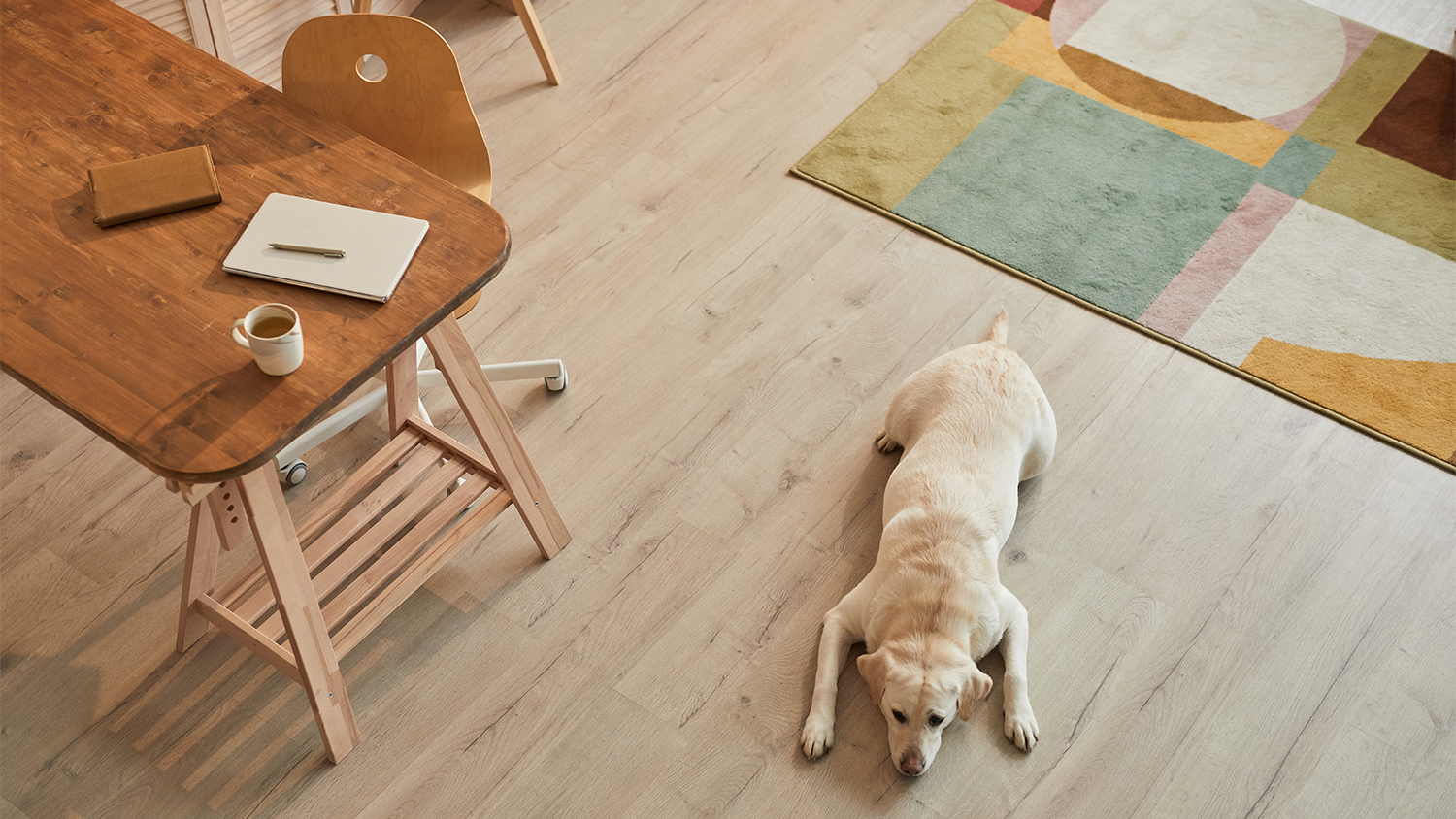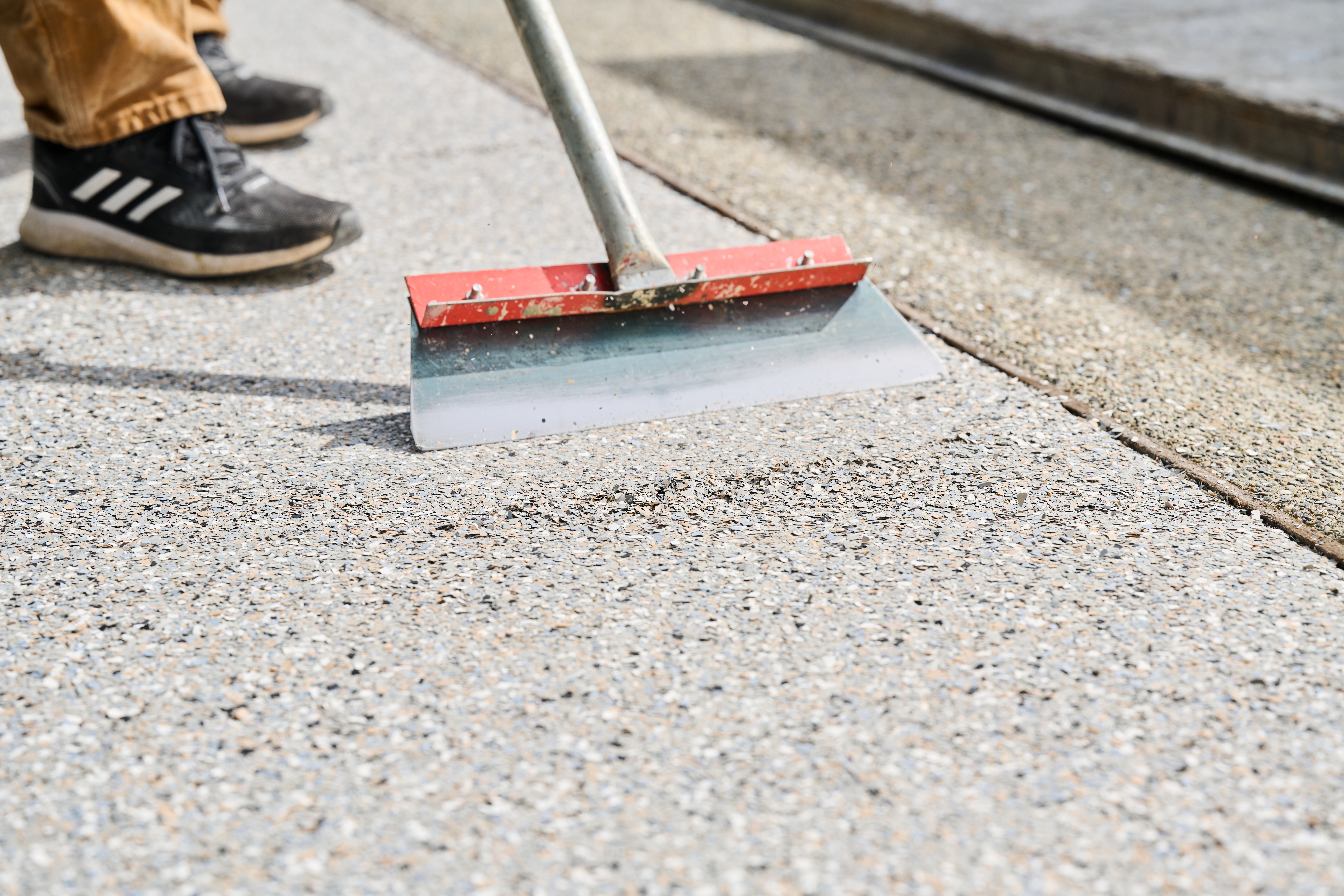
Updated flooring can make any room in your home feel brand new. Find out flooring installation costs, from materials to labor costs.
There’s no need to feel bamboozled by bamboo


Bamboo flooring is made from bamboo, a type of hardy grass, not wood.
Bamboo flooring costs $2 to $20 per square foot.
You can get 10 to 30 years of life out of bamboo floors with proper maintenance.
Bamboo ranks around 1,380 to 1,825 for hardness on the Janka hardness scale, making it harder than most types of oak and pine trees.
The most exciting part of your home reno has come. It’s time to pick out new floors. While shopping, you may come across a product quickly gaining popularity: bamboo. This flooring option adds a warm, natural element to any room, and it’s impressively durable. But there are some things to consider before you install bamboo flooring in your home. Learn all the bamboo flooring pros and cons before deciding if this material is right for you.
Bamboo flooring is made from the plant bamboo, a type of grass that is hardy and has few pests. This plant grows quickly, so it’s ready to harvest every five to seven years, after which it can regrow from the same plant. Manufacturers process the bamboo into floor planks that resemble hardwood but boast the plant’s natural pest resistance.
Bamboo comes in solid, engineered, or strand-woven varieties. Strand-woven bamboo flooring is even harder than solid bamboo because it combines bamboo and resin in layers for increased durability. Bamboo flooring has many pros and cons, including its durability against wear and tear, its eco-friendliness, and its limitations in style options. Homeowners should carefully weigh these benefits and drawbacks before deciding whether bamboo matches their family’s needs and preferences.
| Bamboo Flooring Pros | Bamboo Flooring Cons |
|---|---|
| Sustainable material | Limited designs |
| Resistant to pests | Shorter life span |
| High durability | Susceptible to moisture damage |

Bamboo offers several benefits, particularly for eco-conscious homeowners. It’s durable enough to stand up to scratches and denting from pets and kids, and it has the added benefit of being naturally resistant to many common household pets, including termites. Some of the benefits of bamboo flooring include:
Bamboo is considered a sustainable material because the plant grows quickly. It takes five to seven years to reach maturity, at which point it will be ready to harvest. Plus, the whole plant doesn’t have to be harvested and replanted. The bamboo can be harvested and left to regrow.
Unlike hardwood, which can be vulnerable to pests like termites and carpenter ants, bamboo is a pest-resistant material. Bamboo is not wood but grass, so it’s not a common food source for these pests. Bamboo is also an allergy-friendly flooring option because it doesn’t attract or provide the right environment for dust mites to thrive.
Bamboo floors have between 1,380 and 1,825 on the Janka scale, which measures the relative hardness of wood (or, in bamboo’s case, a wood-like material). The exact hardness will vary by specific bamboo materials and manufacturers, but in comparing bamboo versus hardwood flooring, bamboo is harder than some types of hardwood, including oak.
Bamboo flooring has its pros and cons. While there are many things to like about this sustainable material, it might not work for every household. The limited colors mean bamboo flooring may not fit in with all decor styles, and it has a much shorter life span than other flooring materials, like solid hardwood, tile, or concrete. Some drawbacks of this material include:
Unlike wood, vinyl, or laminate, which can come in a range of different colors and styles, bamboo is more limited in its natural color options. Bamboo has a light, yellow-toned appearance, or it can be carbonized, which darkens the color. The material is difficult to stain and can look splotchy or uneven, so it may be better to stick with its natural tones.
While bamboo flooring isn’t as short-lived as some flooring types, like carpet or low-quality vinyl or laminate, it doesn’t last as long as engineered or solid hardwood. Bamboo flooring has a life span of 10 to 30 years on average.
Bamboo flooring is vulnerable to spills, leaks, and even humidity, so it might not be the right choice for bathrooms, basements, or kitchens that see a lot of messes. Bamboo will soak up liquid and swell up, and stains will easily stick to this material. Be mindful of humidity and temperature swings, too. If the bamboo experiences major swings in humidity levels, it can shrink and crack.

Bamboo flooring costs $2 to $20 per square foot, so it costs less than other types of flooring, especially hardwood. Add in its durability and sustainability, and you can easily see why bamboo is becoming a popular flooring choice. However, its limited designs and vulnerability to moisture mean bamboo flooring isn’t the right fit for every room. Homeowners may want to consider other options for style or water resistance, such as:
Engineered hardwood: Engineered hardwood has better resistance to moisture, so it may be a better option than bamboo for basements or kitchens.
Solid hardwood: Hardwoods offer more color and style options and a longer life span, but they can be high maintenance. Sealing every few years offers better protection.
Vinyl: Vinyl has a similar life span to bamboo flooring, and some types of vinyl are more water-resistant. But vinyl flooring isn’t as eco-friendly as bamboo.
Laminate: Laminate is vulnerable to moisture like bamboo, but it comes in a wide variety of designs. It’s also a lower-cost option at $3 to $10 per square foot.
Bamboo flooring is a great choice for many homes, especially if you want to incorporate natural elements into your interiors or you value sustainability. It’s not the lowest-cost flooring option, but it does cost less than materials like hardwood or ceramic tile. Because it’s so durable and can be refinished, bamboo will last several years, even up to three decades, in your home.
Of course, if you dream of floors that have a rich, dark tone or a grayish hue, it may be harder to achieve those design goals with bamboo. Also, if you find yourself cleaning up spilled sippy cups often or steaming up the bathroom with long showers every day, you may want to opt for something more water-resistant.
If you decide that bamboo flooring is right for you, get the most out of your new floors by hiring a local flooring company to handle installation.
The cost of bamboo flooring can range anywhere from $1,750 to $5,000, with an average total of $3,400. Some of the biggest cost factors of bamboo flooring include the room size and the type and brand of bamboo flooring you want.
While installing bamboo flooring yourself can save you some money—you’ll spend $2 to $10 per square foot on the flooring itself—it’s not an easy DIY project. If you don’t have any experience installing flooring, it can be a dangerous endeavor. What’s more, any mistakes in creating an even flooring or spacing the flooring out correctly will result in you spending more time and money on fixing the mistake. It’s best to hire a professional floor installer to ensure you get the job done right the first time.
I had Ace Fireplace Services install custom chimney caps for my home, and the results are stunning. They fit like a glove and have added a touch of sophistication to my chimney. I can't recommend their services enough.
I first met Ilia when windows were installed on my new back porch. He was extremely conscientious about getting the job done right and it was. Now I ve had all the windows of two levels of my house completed by him.....ON TIME, ON BUDGET, TO MY TOTAL SATISFACTION. I'm a happy customer.
AFS was excellent from start to finish. Jess, the sales associate, was fantastic...very knowledgeable and very professional. The installation crew was excellent. I couldn't be more pleased with the process. Best of all, my new floor looks fantastic!
We used Unique Hardwood Floor LLC three years ago to work on the floors of a 70 year old home that needed a great deal of work. Some floors needed repairs, some were replaced and others just needed to be refinished. It was a complicated job as they needed to blend the old and the new to...
We hired Jim to replace our hardwood floors with new hardwood. He and his helper Jerry did a fantastic job. Their work ethic is impeccable!! We would highly recommend McColl Floors!
Bill Gerhardt sold the company to his employees at the end of 2019, apparently without a workable succession plan and without notifying prospective customers of this fact. Most aspects of the maintenance contract have not been fulfilled: no installation of anual plantings per contract, no...
Logan did a superior job: on time, efficient, pleasant and helpful salesman, craftsmen installers. All went well, and I'd surely hire them again.
Kathy was great to work with. Always responsive and punctual. She was able to accomodate my work schedule with evening and even weekend appointments, a huge plus for me. Install was quick. One of the blinds was defective and she was quick about ordering the replacement and reinstalling. Her...
his summer it was time... after building my home in 2010 I didn't think I would need to replace my windows for a while, but about 3/4 years after we moved in, our windows started fogging up. Our energy bills weren't too bad, however we knew our current windows were not efficient. So the...
It went fantastic! Paul arrived at pre-arranged time to look at the basement, discuss options and quote price. A few days later I called him to get things rolling. He arrived on time and I gave him the designated down payment. The crew arrived at 8AM on the scheduled day and immediately began...
From average costs to expert advice, get all the answers you need to get your job done.

Updated flooring can make any room in your home feel brand new. Find out flooring installation costs, from materials to labor costs.

Updated flooring can make any room in your home feel brand new. Explore flooring installation costs in Baltimore, MD, from materials to labor costs.

Terrazzo may cost more than many other flooring options, but its longevity and high return on investment make it worthwhile.

Learn how to fix scratches in bamboo flooring with these simple DIY strategies and what to do to prevent them from returning.

Installing new floors doesn’t have to be messy or difficult. Here’s how to install linoleum flooring, from prep work to finishing touches.

If you have ever wanted to learn how to install transition strips on concrete, this resource will equip you with everything you need to know.